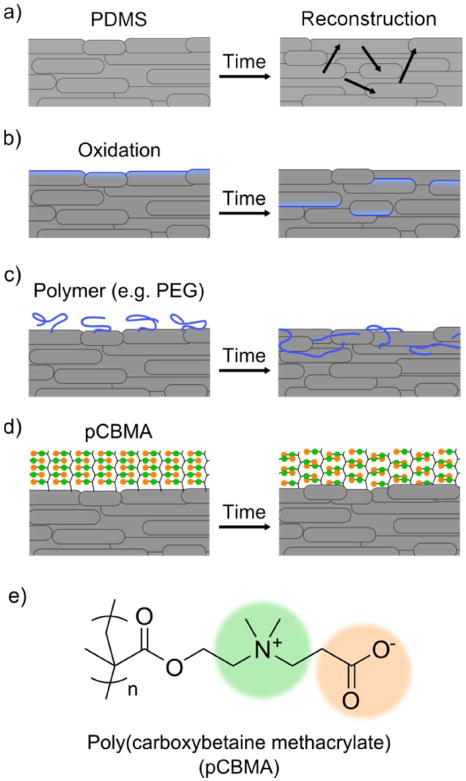Figure 1.

(a) Over time, PDMS chains will reconstruct, resulting in a surface that is constantly being renewed, known as hydrophobic regeneration. (b) The PDMS surface is made more hydrophilic by oxidation, but this surface will degrade over time. (c) The same problem occurs with polymers, particularly ones of amphiphilic nature like PEG. (d) pCBMA, due to its unique characteristics, forms a super stable nonfouling surface due to its zwitterionic nature. The structure of pCBMA is shown in (e).
